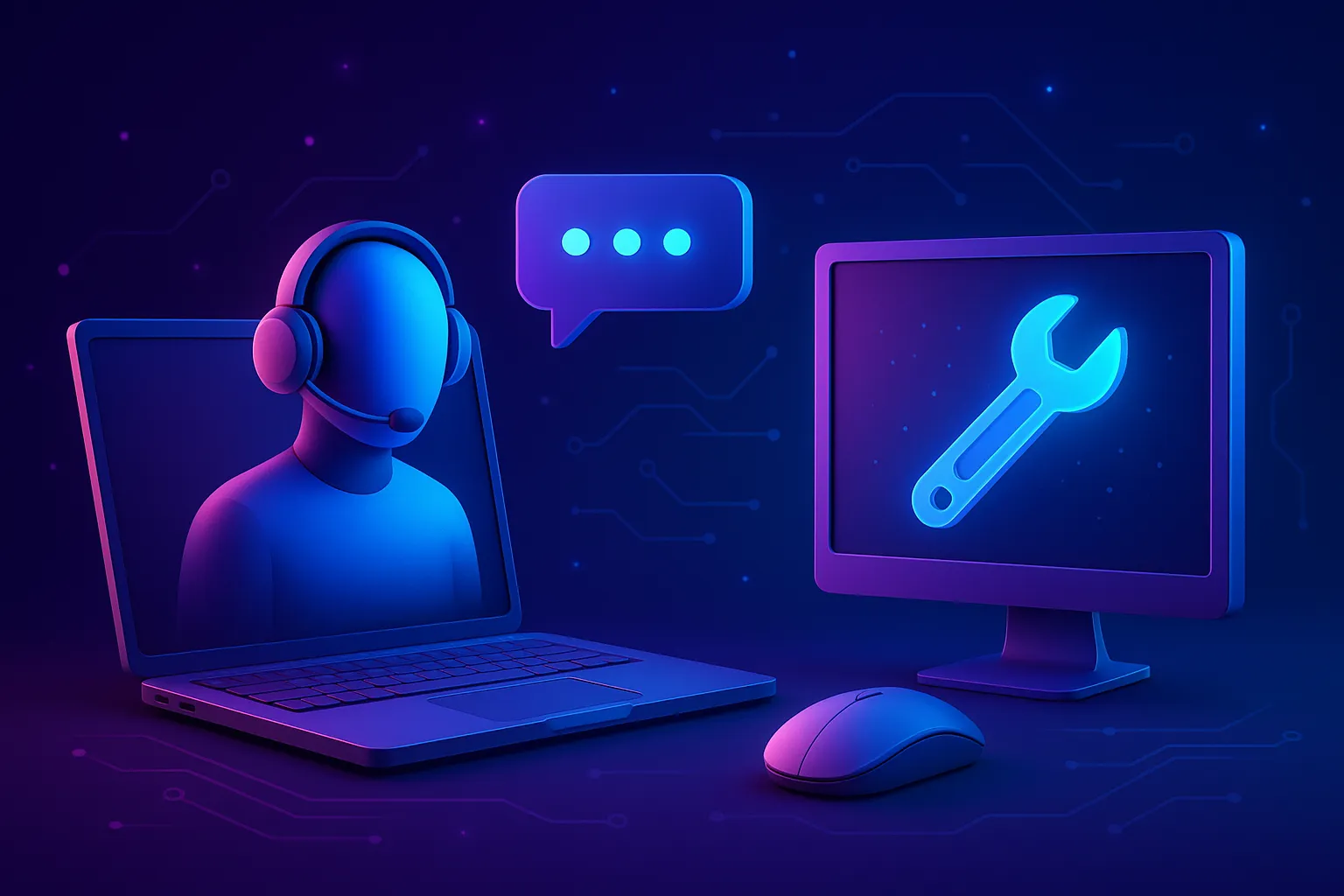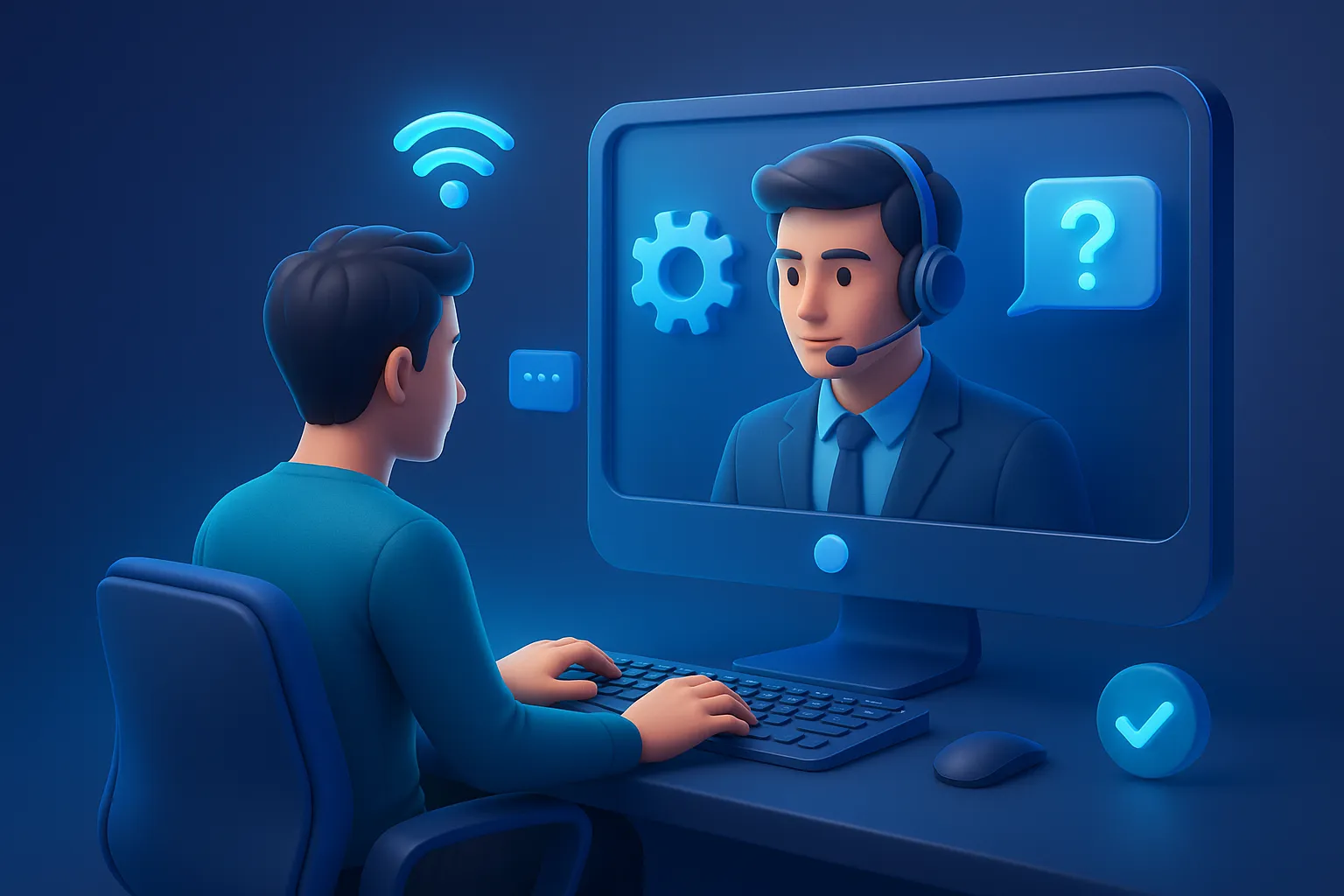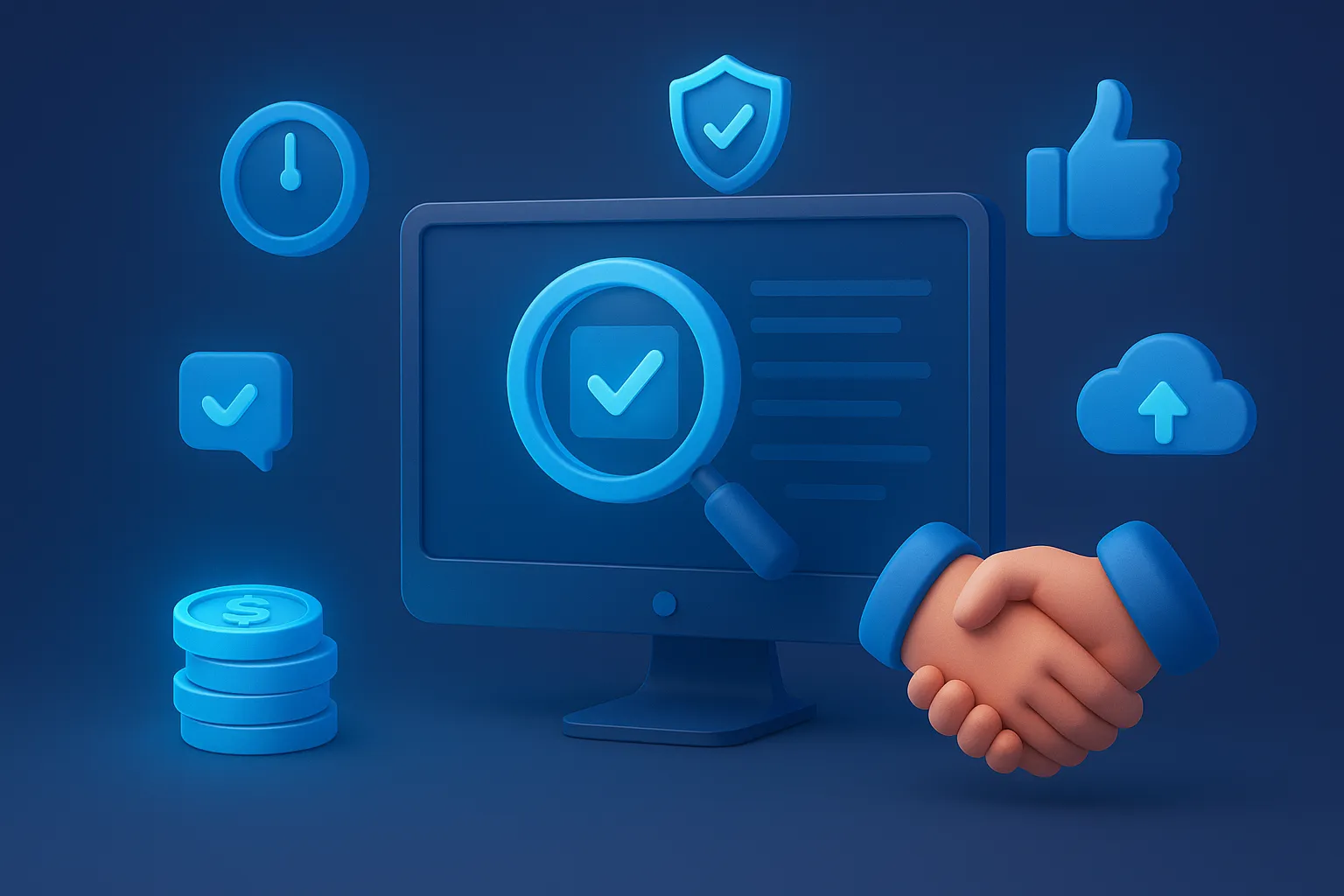July 16, 2025
July 16, 2025

Downtime is costly, whether it’s a stalled workstation, a frozen server, or an urgent software failure across your team. For modern businesses, waiting hours for on-site technical support is no longer a viable option. Remote computer assistance offers a faster, smarter, and more scalable solution: expert help delivered instantly, securely, and without disrupting your operations. This article explores how enterprises can leverage remote support to solve IT issues efficiently and why Serdao is the trusted partner for seamless technical assistance at scale.
Remote computer assistance refers to a method of providing technical support by accessing and controlling a user's computer or network system from a different location entirely over the internet. Instead of dispatching an on-site technician, IT professionals use secure remote access tools to diagnose, troubleshoot, and resolve issues in real time.

This approach typically involves specialized software (such as TeamViewer, AnyDesk, or enterprise-grade platforms) that allows the technician to:
Remote assistance is widely used by businesses to minimize downtime, reduce IT service costs, and ensure fast resolution of technical problems across multiple workstations or locations. For companies operating in hybrid or distributed environments, it’s an essential tool to maintain productivity and system stability without the delays of on-site visits.
Remote computer assistance isn’t just a convenience, it’s a powerful solution for a wide range of everyday IT problems that can hinder business operations. Here are some of the most common technical issues that remote support can effectively resolve:
1. Software Installation & Updates: IT teams can remotely install or update business-critical applications without interrupting the end user’s workflow. This ensures all systems stay secure and compliant with the latest software versions.
2. System Performance Issues: Slow computers, frozen screens, or unresponsive programs are common productivity killers. Remote technicians can diagnose CPU/memory overloads, disable unnecessary startup programs, and optimize performance remotely.
3. Network Connectivity Problems: Whether it’s a dropped VPN connection, unstable Wi-Fi, or inability to access shared drives, network-related issues can be diagnosed and fixed remotely by adjusting router settings or reconfiguring network protocols.
4. Printer and Peripheral Troubles: Remote support can help configure printers, scanners, and other peripherals, ensuring devices are properly connected and drivers are up to date.
5. Email and Communication Tools Errors: Issues with Microsoft Outlook, Slack, Teams, or other communication platforms can be resolved remotely from fixing sync errors to configuring new accounts or settings.
6. Malware or Security Alerts: If a workstation displays suspicious behavior or security alerts, a remote technician can investigate immediately, isolate the threat, remove malware, and perform a quick system scan without needing physical access.
7. User Account and Access Control: Managing passwords, user permissions, or login issues for internal systems and SaaS platforms can all be handled remotely, improving response time and reducing friction for employees.
Remote assistance enables IT support to be fast, non-disruptive, and scalable especially for businesses managing multiple users, departments, or office locations.
Remote computer assistance is becoming an essential solution for modern businesses, not just because it’s convenient, but because it helps companies reduce IT overhead, scale support efficiently, and maintain business continuity in an increasingly digital environment. Below are the most impactful benefits that remote assistance brings to organizations of all sizes.

1. Faster Response, Less Downtime
Time is money, especially when technical issues disrupt your operations. With Remote computer assistance, IT teams can intervene immediately often within minutes, instead of waiting for someone to arrive on-site. This speed drastically reduces downtime and helps keep productivity on track, even during peak hours or mission-critical situations.
2. Reduced IT Support Costs
On-site visits require travel time, logistics, and often higher technician fees. Remote assistance removes these barriers by enabling support staff to assist multiple users in different locations without ever leaving their desks. Over time, this translates into significant cost savings for businesses, especially those with multiple offices or a growing remote workforce.
3. Scalable Support for Distributed Teams
As more companies adopt hybrid and remote work models, supporting employees across regions becomes a challenge. Remote computer assistance offers centralized control, allowing your internal or outsourced IT team to manage endpoints, troubleshoot issues, and ensure system consistency no matter where the user is located from headquarters to a home office.
4. Enables Proactive System Maintenance
With remote tools, IT teams don’t just fix problems, they prevent them. Features like performance monitoring, scheduled updates, and real-time alerts allow technicians to identify and resolve issues before they escalate. This proactive approach reduces the risk of data loss, security vulnerabilities, or costly downtime due to system failure.
5. Enhanced Data Security and Control
Security is a major concern when granting remote access but today’s remote support platforms are built with enterprise-grade security in mind. Sessions are encrypted, access is permission-based, and every action can be logged and audited. Businesses maintain full visibility and control over who accesses what, and when, ensuring compliance with internal and external data policies.
6. Increased Employee Satisfaction and Productivity
When technical issues are resolved quickly and smoothly, employees can stay focused on their work instead of waiting for help. This not only reduces frustration but also builds confidence in the company’s IT systems. In customer-facing roles, quicker support also means fewer service disruptions and a better client experience overall.
Remote computer assistance is no longer just a technical tool, it's a strategic asset. It empowers businesses to respond faster, scale smarter, and maintain operational excellence across diverse environments.
Remote computer assistance is one of the most powerful tools for solving IT problems quickly but speed and efficiency don't happen by chance. To truly benefit from this solution, businesses need a clear strategy that combines the right technology, skilled professionals, and well-defined processes. Here's how to ensure your organization gets the fastest and most reliable support possible.

The core of any successful remote computer assistance setup is the platform it runs on. Enterprise-grade tools offer more than just screen sharing, they provide features like encrypted sessions, multi-user access, integration with IT ticketing systems, and detailed session logs.
These features aren’t just about security; they directly impact speed and scalability. For companies managing dozens or hundreds of endpoints, platforms such as TeamViewer Tensor, AnyDesk, or ConnectWise Control can support simultaneous sessions, offer built-in diagnostics, and ensure smooth support across multiple devices and users.
Technology only works as well as the people behind it. Whether you build an in-house IT team or work with a managed service provider like Serdao, make sure the support team is trained to respond quickly, understand your business infrastructure, and deliver consistent results.
Your remote computer assistance provider should offer transparent service-level agreements (SLAs), industry-specific expertise, and real-time communication during each support session. Having an expert on call, who knows your systems inside and out means even complex technical issues can be resolved without delay.
Many delays happen not during problem-solving, but before support even begins. A slow, unclear, or overly complex request process can block users from getting help when they need it most.
To make the most of remote assistance, businesses should define a simple and structured support workflow. Use a centralized helpdesk, integrate chatbots or request forms, and ensure your staff knows exactly how to start a remote session and describe their issue effectively. The easier it is to ask for help, the faster the problem gets fixed.
Fast remote support doesn’t stop at solving today’s issues. It should continuously improve. Track support trends: Which issues occur most frequently? Which departments experience the most downtime? Are users satisfied with how fast and clearly their problems are handled?
This feedback can be used to improve processes, provide internal training, or even automate recurring fixes. When paired with proactive monitoring and regular system maintenance and support services in IT, remote computer assistance becomes not just reactive support, but a long-term productivity booster.
To get the most out of remote support, businesses must treat it as a core IT strategy, not just a temporary fix. By combining the right tools, expert teams, and streamlined communication, you can transform remote computer assistance into a powerful engine for efficiency, continuity, and growth.
At Serdao, we understand that technology issues don’t wait and neither should your business. That’s why we provide reliable, secure, and responsive remote computer assistance designed to support both individuals and organizations with varying technical needs. Whether you're managing a growing team, supporting remote employees, or simply looking for fast resolution to system disruptions, Serdao delivers a smooth support experience that minimizes downtime and restores productivity quickly.

Our approach is grounded in clarity and efficiency. You won’t find long waiting times, confusing processes, or generic solutions. Instead, our technical specialists focus on understanding your specific environment ensuring that every session is tailored, secure, and resolved with minimal disruption to your operations.
We support a wide range of remote scenarios: software troubleshooting, network diagnostics, system optimization, or onboarding new users. For individuals, it's like having a trusted technician a click away. For businesses, it’s about having a partner who keeps your operations running smoothly whether you have five users or five hundred.
With Serdao, remote support becomes less of a workaround and more of a strategic advantage.
Conclusion
Remote computer assistance is no longer just a backup option, it’s a smarter, faster way to keep your systems running and your people focused. With the right tools, team, and process in place, businesses can turn everyday tech issues into opportunities for smoother, more efficient operations. And with a trusted partner like Serdao, getting there is easier than you think.